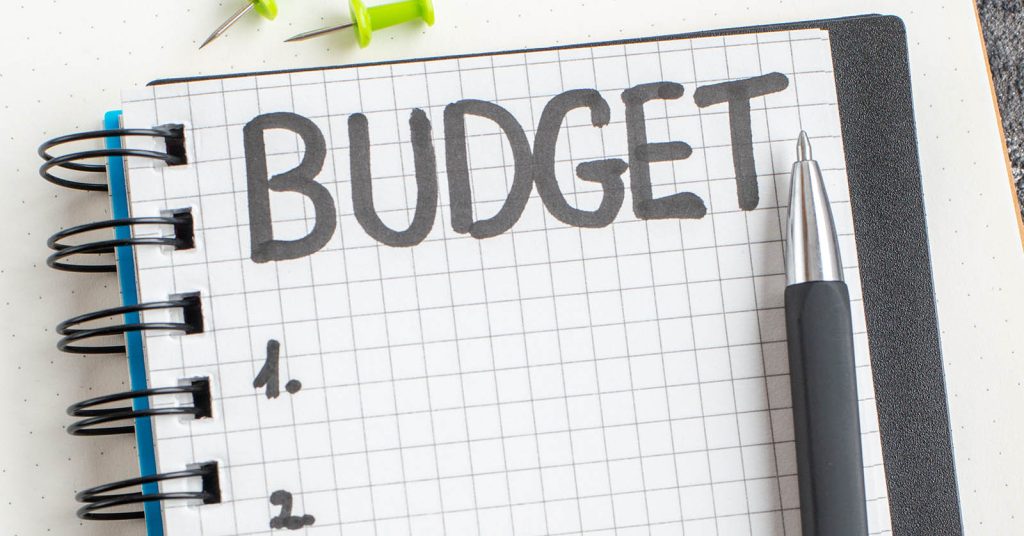Money habits start at home, long before a first paycheck. A simple allowance and age-appropriate chores can build real skills — saving, spending wisely, giving, and talking about trade-offs. The trick is choosing a setup you’ll stick with, explaining the “why,” and keeping it consistent as kids grow. Below you’ll find practical models, scripts, and rules that align with reputable guidance from pediatric and consumer-finance authorities (and protect your child’s privacy along the way).
You don’t need fancy apps to make progress — just a repeatable routine. Pick a method, set clear expectations, and use short money talks every week. With small amounts and real choices, kids learn faster (and make cheaper mistakes) while the stakes are low.
Key Takeaways
- Consistency beats amounts — a predictable allowance plus clear chores teaches more than sporadic “bonuses.”
- Pick a method and name the rule — base allowance, chore-commission, or hybrid; tell kids exactly how money is earned.
- Use 3–jar or 3-bucket budgeting — Save–Spend–Give with targets (e.g., 20% Save, 10% Give).
- Protect privacy — vet youth banking/apps and follow COPPA basics before sharing a child’s data online.
Allowance 101: What It Is (and Isn’t)
Allowance is a recurring, parent-funded amount given to a child on a set schedule to practice money choices. Experts emphasize the learning conversation over the dollar figure. The Consumer Financial Protection Bureau (CFPB) suggests that if you choose to give an allowance, talk frequently about how kids plan to use it, what happened, and what they learned — so the habit builds skills, not entitlement.
There’s no single “right” number. Many families tie the amount loosely to age (e.g., $1 per week per year of age) or to a small, fixed sum that fits the household budget. The real lever is predictability: when kids know what’s coming and when, they can plan, save, and delay gratification. The American Academy of Pediatrics (AAP) also frames allowance as a vehicle for values — talking about needs vs. wants and connecting chores to family responsibility.
Allowance isn’t a reward for every single thing a child does. Everyday family responsibilities (cleaning up after yourself, basic room care) can simply be expected as part of the household, while extra or above-and-beyond tasks can be linked to earnings if you choose the commission model below. That separation helps avoid “negotiating” for every request and keeps family contributions from becoming purely transactional.
How you deliver funds matters less than the teaching moments you create. Cash makes lessons tangible (great for younger kids). For older kids, supervised debit or youth accounts can add real-world practice — tracking balances, reading statements, and spotting fees — so long as parents stay in the loop and choose insured, reputable institutions. CFPB’s Money as You Grow offers age-targeted prompts to guide these money talks.
Bottom line: choose an amount you can maintain through busy seasons. Then commit to a weekly or biweekly “money minute” that reviews choices, mistakes, and wins — without shaming.
Three Proven Allowance Models (and How to Pick)
Families typically use one of three structures. Each can work; the best choice depends on your values, your child’s personality, and your tolerance for tracking details.
| Method | Best For | How It Works | Watch-outs |
|---|---|---|---|
| Base Allowance | Teaching budgeting stability | Fixed weekly/biweekly amount; chores expected as part of family life | Kids may expect money regardless of effort — use clear expectations and money talks |
| Chore-Commission | Motivating earn-as-you-go personalities | Pay per task (rate sheet); unpaid basic chores remain non-negotiable | More tracking; risks “I won’t do it if unpaid” mindset — separate family duties from paid tasks |
| Hybrid | Balance of stability + incentives | Small base plus commission for extra jobs | Still needs simple rules to avoid confusion |
What to pick? If your child struggles to save, start with a base to enable planning. If motivation is the gap, add a commission sheet for extra jobs. In all cases, pair the money with Save–Spend–Give buckets (physical jars or labeled digital sub-accounts) so kids practice allocating every inflow with intent. CFPB encourages parents to help school-age kids set money goals and compare options as they learn.
Age-Appropriate Chores That Build Skills
Chores teach responsibility and competence, not just “how to earn.” Health and child-development authorities recommend matching tasks to developmental stage, emphasizing safety and routine. Examples many families use:
- Ages 5–7: put toys away, wipe table after meals, match socks, water plants.
- Ages 8–10: set/clear the table, feed pets, fold laundry, tidy bathroom counter, sweep small areas.
- Ages 11–13: manage laundry start-to-finish, take out trash, basic meal prep, mow small sections if safe.
- Teens: cook simple meals, deep clean shared spaces, supervise younger siblings briefly, plan grocery lists with a budget, comparison-shop.
The AAP’s HealthyChildren.org emphasizes that chores should be specific, consistent, and part of the family’s routine, with clear expectations and age-appropriate supervision. Consider posting a weekly board and reviewing it in your budget meeting (5–10 minutes).
To keep the system humane, separate basic family chores (expected, unpaid) from earnable extras (a laminated sheet with rates). That preserves cooperation while rewarding initiative. If a task affects safety or health (e.g., litter box), treat it as family duty — don’t turn everything into a transaction.
Cash vs. Youth Accounts vs. Cards (and Safety Rules)
Cash is tactile and great for younger kids — perfect for the three-jar method. As kids approach middle school, consider a youth savings account or a supervised checking/debit account with a parent or guardian on file so they learn to deposit, track balances, and read statements. The CFPB’s Money as You Grow materials recommend letting kids practice in controlled ways: comparing options, noticing fees, and spotting the costs and benefits of cards as teens.
When you open accounts, confirm that deposits are at an FDIC-insured bank (or NCUA-insured credit union). Coverage is generally up to $250,000 per depositor, per bank, per ownership category. Custodial (UTMA/UGMA) accounts are insured to the beneficiary based on the bank’s rules and titling, but details matter — review FDIC guidance on how custodial accounts are insured to ensure proper titling.
Before choosing any kid-finance app, learn the basics of online privacy. The Children’s Online Privacy Protection Act (COPPA) requires verifiable parental consent before websites or online services collect personal information from kids under 13 and imposes limits on what data can be collected and how it’s used. Check the provider’s privacy policy, age minimums, and parental controls; use the app’s strongest privacy settings.
What to Teach (By Skill), Not Just What to Pay
Allowance and chores are the vehicle; money conversations are the engine. For school-age kids, focus on goal-setting, price comparison, simple saving rules, and charitable giving. For teens, add budgeting to a paycheck rhythm, introduction to credit, and safe use of digital payments.
- Save first: Automate a fixed percentage to “Save,” not what’s left over. Tie savings to a goal and date.
- Spend with a plan: Create a simple list of “always ask first” categories (in-app purchases, subscriptions, late-night orders).
- Give with meaning: Let kids pick a cause; research together how donations are used.
- Compare before you buy: Practice unit prices, return policies, and shipping costs on real items.
- Credit comes with costs: For older teens, walk through interest, fees, and consequences of carrying a balance.
Keep lessons short and frequent. Use your own purchases as teachable moments: “We waited for a sale,” “We returned it within the policy,” “We chose the store brand.” Repetition builds intuition.
Taxes, Earnings, and When Roth IRAs Make Sense
Parents often ask if allowance qualifies a child to fund a Roth IRA. The rule is simple: IRA contributions require “compensation” (earned income) — wages, salaries, tips, or legitimate self-employment earnings. Gifts and typical household allowance do not count. If a teen has a job and earns income reported for tax purposes (e.g., W-2 from an employer or properly documented self-employment), they can contribute up to the annual IRA limit or their earned income amount, whichever is less. Verify current limits each year in IRS Publication 590-A.
If your family owns a business, additional rules may apply (for example, certain wages paid to a parent’s sole-proprietor-run business to a child under 18 are exempt from FICA taxes). That is beyond the scope of allowance and varies by structure, so consult a tax professional, and rely on IRS primary guidance for decisions.
A Simple Weekly Routine You Can Keep
Here’s a low-friction rhythm that most families can sustain year-round:
- Pick a payout day (Friday after school or Sunday evening). Pay the base allowance and log any commission earnings.
- Allocate and record: Child splits funds into Save–Spend–Give immediately (cash jars or digital sub-accounts). Snap a photo or update a simple sheet so balances are visible.
- Review one decision from the week: a purchase, a skipped purchase, or a savings milestone. Ask what went well and what to change.
- Preview next week’s chances to earn (extra jobs) and any planned spend (birthday gift, field trip, online order).
- Reset chores with the posted list — mark what’s expected vs. what’s paid extra.
This routine takes 10 minutes and compounds learning. If you miss a week, don’t “make it up” with a big catch-up; just resume the normal cadence to preserve expectations.
Troubleshooting Common Challenges
“My child won’t do unpaid chores.” Re-clarify which tasks are family duties and non-negotiable. Keep commissions only for extra jobs. Rotate duties so no one gets the “best” chores every time.
“Spending is too impulsive.” Require a 24-hour wait for any purchase above a set amount (say, $15). For digital purchases, require a parent to tap “approve.”
“Allowance feels like bribery.” Shift toward a base allowance for practice budgeting and keep praise focused on responsibility, not just outcomes. Remind kids allowance is for learning, not payment for being part of the family.
“Apps worry me.” Start with cash or a bank’s youth account and read privacy policies. Under COPPA, providers must have parental consent and clear data-use disclosures for under-13 users; use that to your advantage.
“I’m inconsistent.” Automate reminders on your calendar and pre-stuff envelopes/jars. Consistency, not complexity, drives results.
Frequently Asked Questions (FAQs)
Should allowance be tied to chores?
Either approach can work. Many families use a hybrid: a small base allowance for budgeting practice, plus paid “extra” jobs on a rate sheet. Keep basic chores as family responsibilities so every task isn’t a negotiation. Pediatric and consumer-finance groups emphasize consistent routines and regular money conversations over the specific dollar amount.
What’s a reasonable allowance amount?
There’s no official number. Choose a modest figure you can sustain weekly or biweekly. The educational value comes from predictability and reviewing choices, not from high dollars. Consider an age-based guide (e.g., $1/week per year of age) and adjust to your budget and goals.
Is my child’s money safe in a youth account?
When you use an FDIC-insured bank (or NCUA-insured credit union) and title accounts correctly (including custodial UTMA/UGMA setups), deposits are generally insured up to $250,000 per depositor, per bank, per ownership category. Confirm titling and coverage details with your institution and review FDIC resources.
Can my child open a Roth IRA with allowance money?
No — allowance and gifts are not “compensation.” To fund an IRA, a child must have earned income (e.g., W-2 job or properly documented self-employment). Contributions are limited to the lesser of the child’s earned income or the annual IRS limit; verify limits in IRS Publication 590-A each year.
Are money apps for kids compliant with privacy laws?
Apps serving children under 13 must comply with COPPA, which requires parental consent and limits data collection. Always review an app’s privacy policy and settings, and prefer providers with clear disclosures and parental controls.
Sources
- American Academy of Pediatrics (HealthyChildren.org) — chores, responsibility, and family routines
- CFPB — Money as You Grow: milestones for school-age children and preteens
- CFPB — Middle childhood parent handout (allowance conversations, saving, goal-setting)
- CFPB — Talking with teens about paying with a credit card (costs, trade-offs)
- FTC — COPPA compliance overview (parents/business guidance on data collection and consent)
- FDIC — Deposit insurance FAQs (coverage basics)
- FDIC — Youth and young adult financial education (accounts, insurance awareness)
- IRS Publication 590-A — IRA contributions and compensation definitions (verify current limits)









